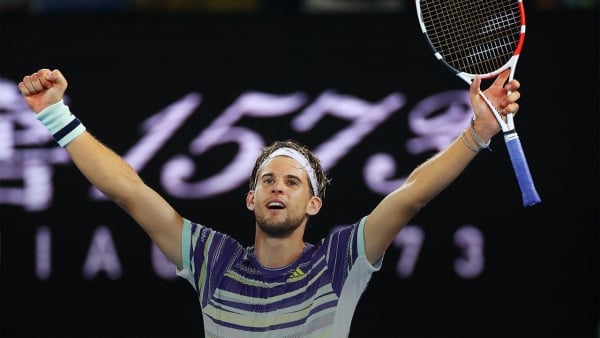Data and insights powered by Infosys
There was a time when Dominic Thiem was associated with long, grinding baseline rallies on the clay courts of Europe and South America.
But a notable factor in his charge to a first Australian Open semifinal has been his metamorphosis into a first-strike player.
It’s not as if the Austrian suddenly discovered how to play aggressive tennis. But after linking up with coach Nicolas Massu in early 2019, Thiem has begun to thrive on hard courts thanks to a change in mindset and tactics.
After winning eight of his first 10 career ATP titles on clay, Thiem in 2019 became the Indian Wells and China Open champion – and then began succeeding on even quicker indoor hard courts in Vienna (where he was champion) and the ATP Finals (where he finished runner-up to Stefanos Tsitsipas).
Arriving at the Australian Open, Thiem had the confidence he could thrive on hard courts as well as having the blueprint to do so, knowing the surface rewards a more aggressive, first-strike style.
And this approach has been evident in Thiem’s match statistics as his tournament has unfolded.
According to Infosys data, Thiem’s first serve has increased in speed in almost all rounds, beginning at an average speed of 185km/h in his first-round win over Adrian Mannarino, increasing to 188km/h during his third-round triumph over Taylor Fritz, and exceeding 190km/h during his stunning quarterfinal defeat of Rafael Nadal.
MORE: Titanic Thiem rolls Rafa
It was against Nadal that he was at his aggressive best.
The Austrian pounded 14 aces and a service winner, plus another 16 winners on the third stroke of the rally; this collective total of 31 winners from his serve and second shot represented almost half his overall winner tally during the four-set slugfest.

He also served-and-volleyed seven times against Nadal – for a 100 per cent success rate – despite not doing so more than once in any of his other matches at Australian Open 2020.
Talk about taking charge.
Somewhat incredibly, Thiem did not win the majority of rallies of 0-4 shots against Nadal. Yet his aggressive approach against the Spaniard was a continuation of what he had been doing throughout the tournament.
In his first four rounds, Thiem won significantly more of these short 0-4 shot rallies than his opponents, yet when the rallies extended into the 5-8 shot range, his superiority waned.
Wresting control of points immediately with powerful serving – his first-serve winning percentage peaked at 85 in the fourth round against Gael Monfils, and has averaged 80 per cent for the tournament – before executing aggressive second shots is a tactic that has paid dividends for the fifth seed at Australian Open 2020.
His next opponent, Alexander Zverev, will no doubt be bracing for a similar onslaught in Friday night’s semifinal.
